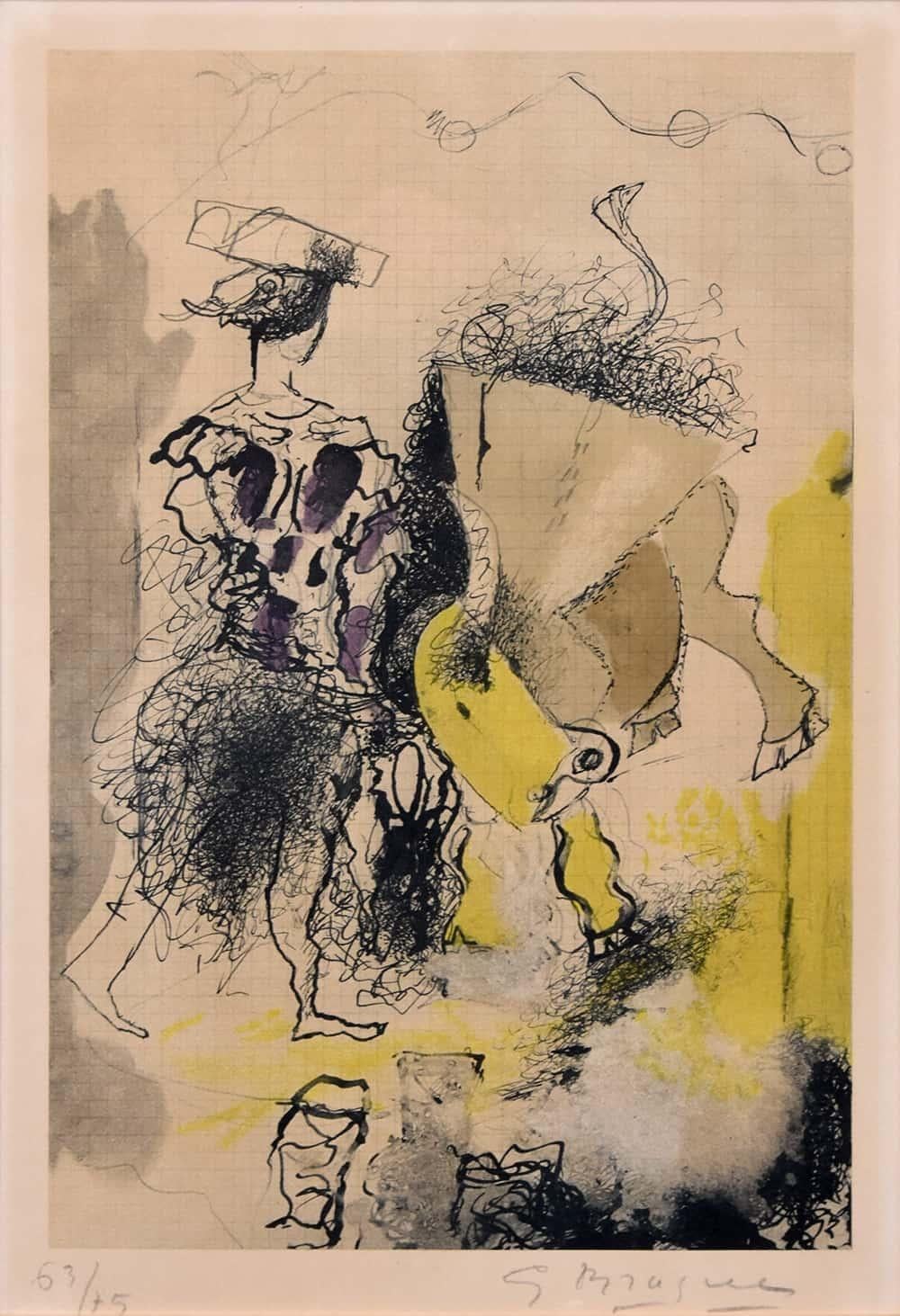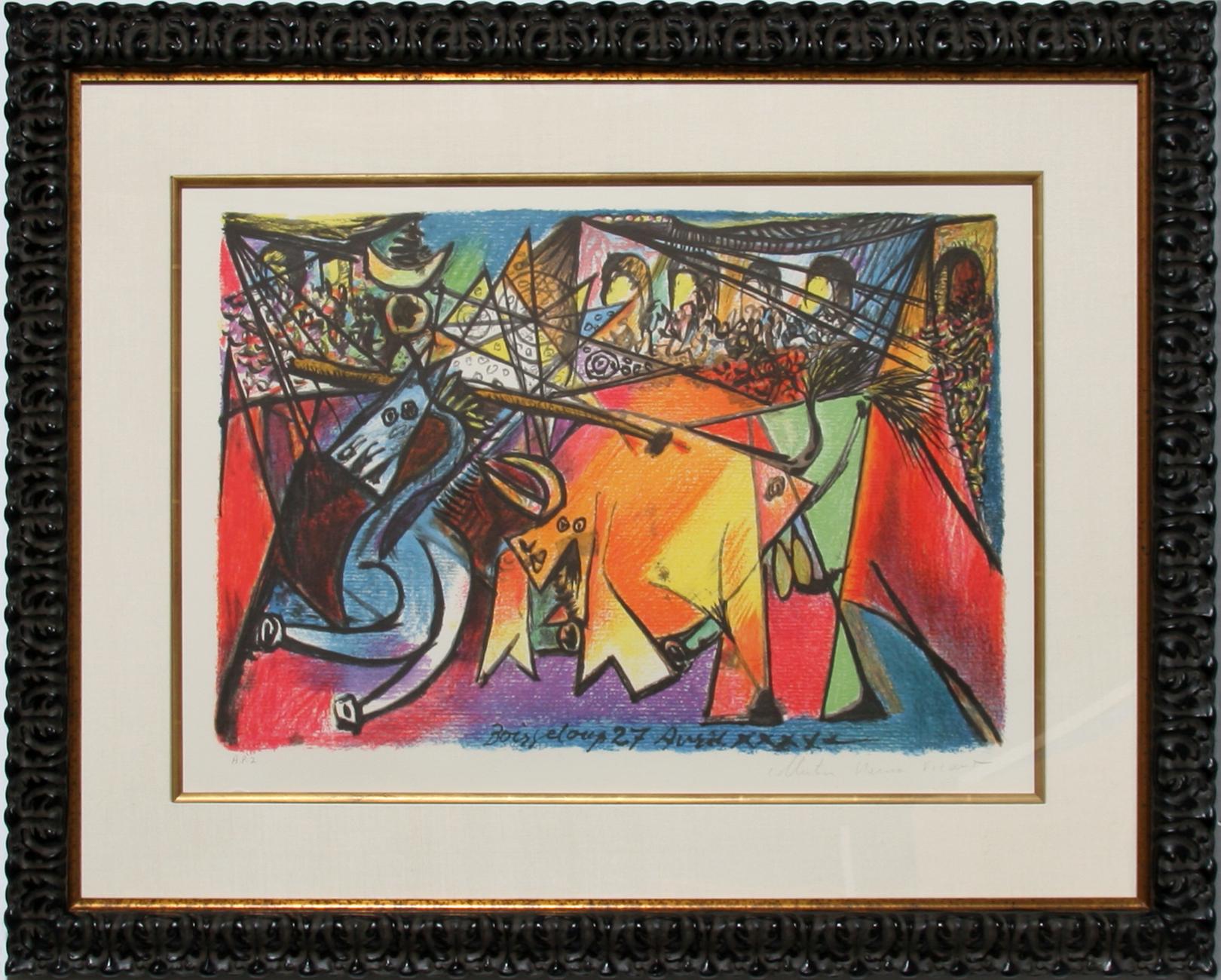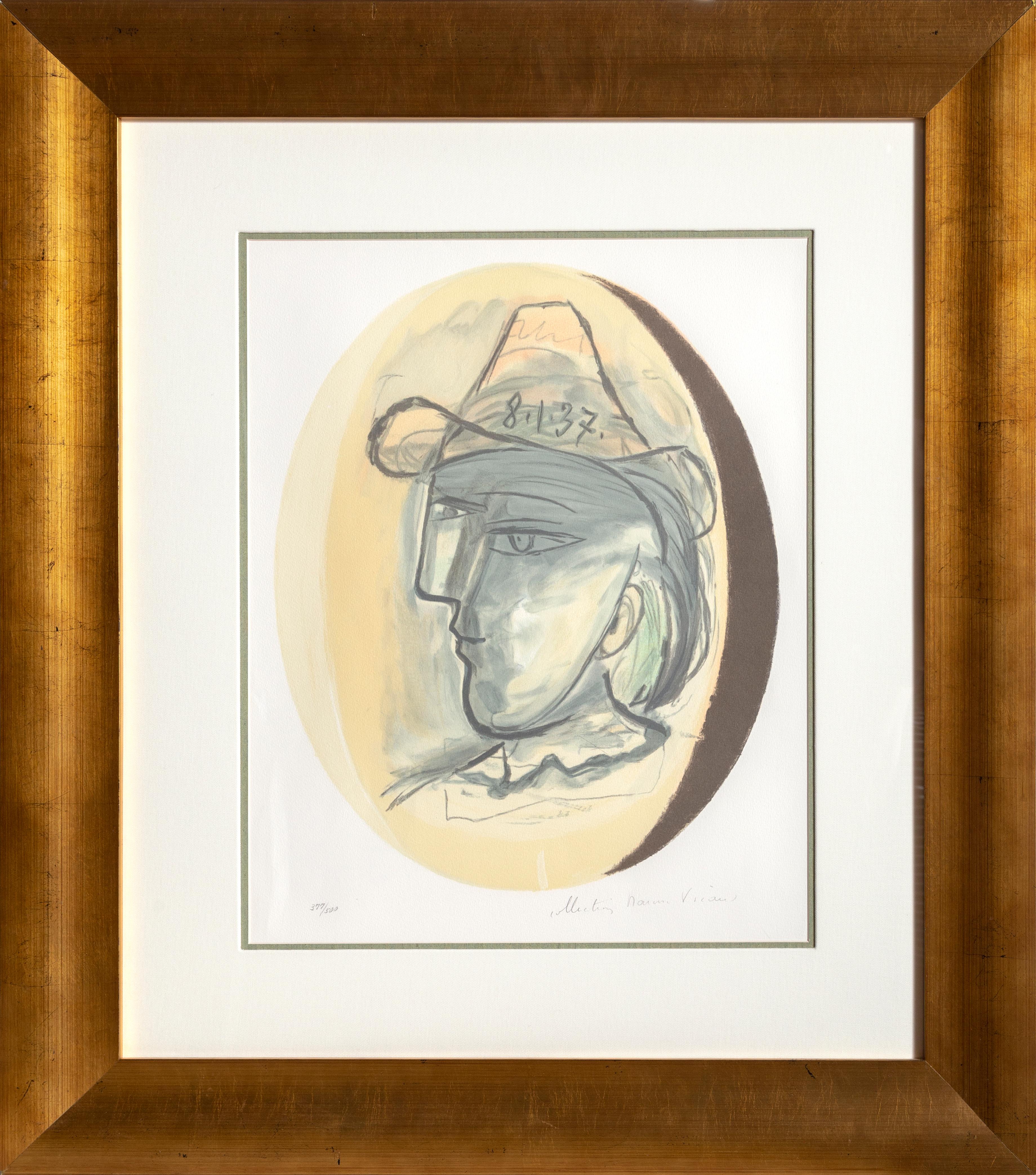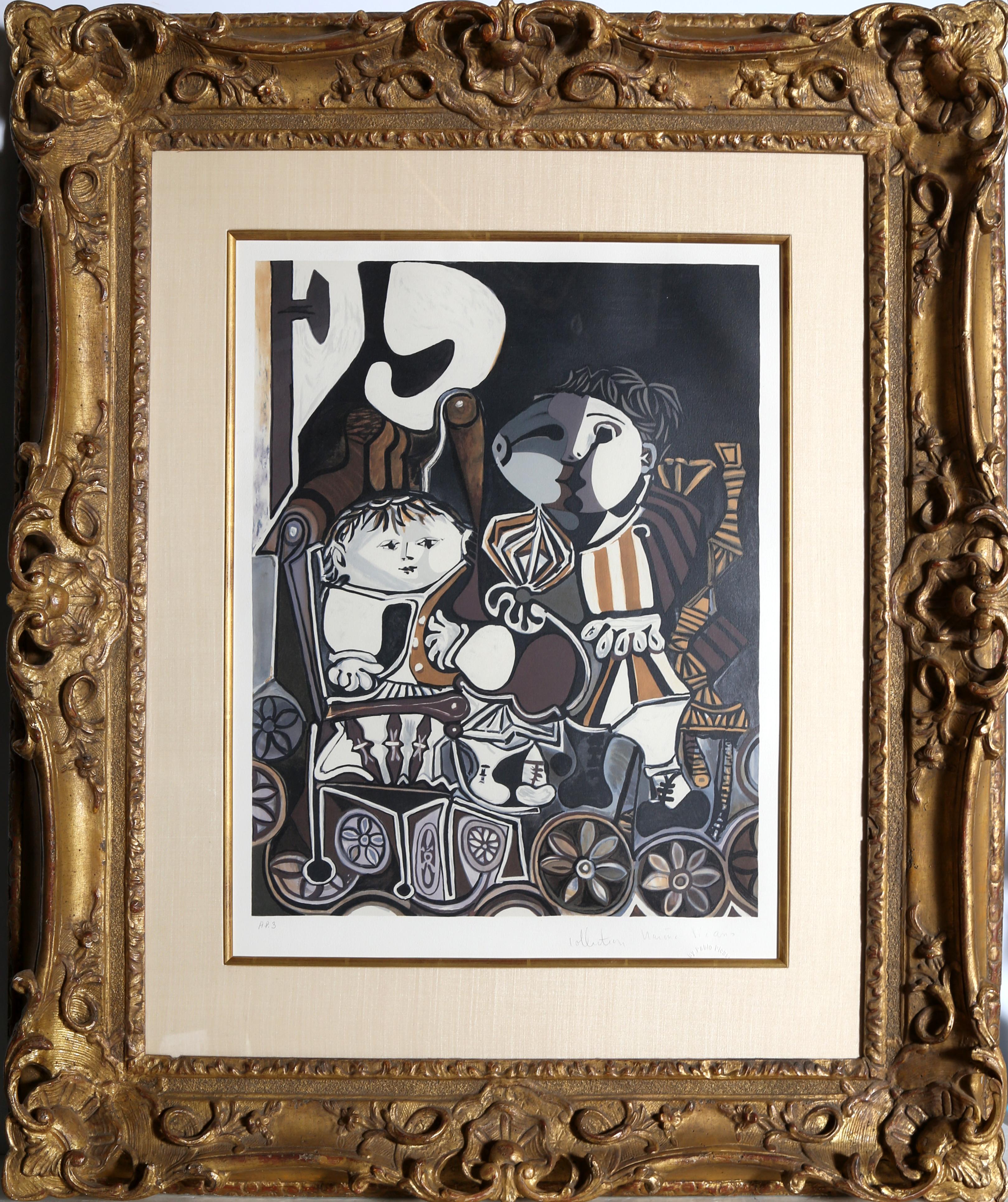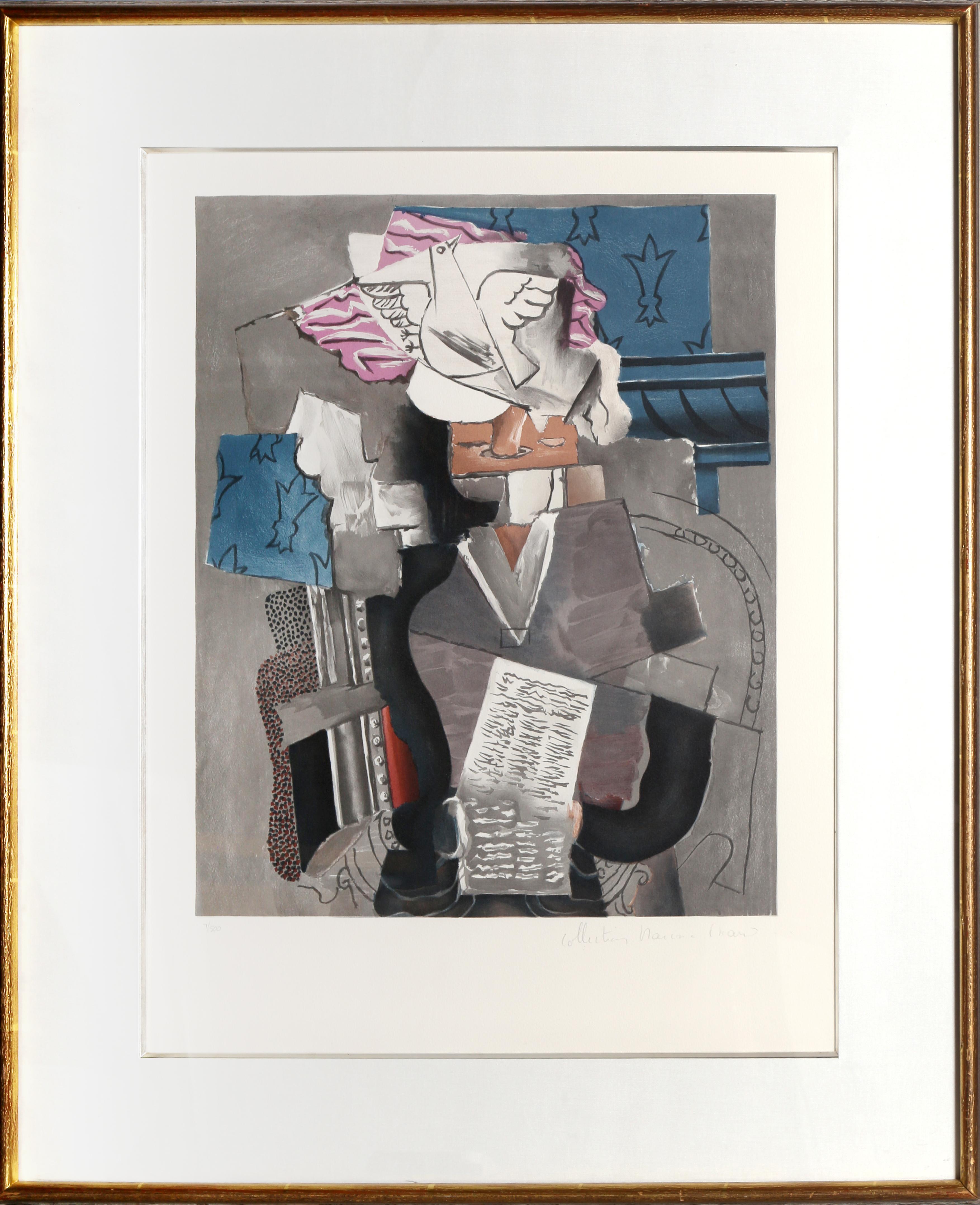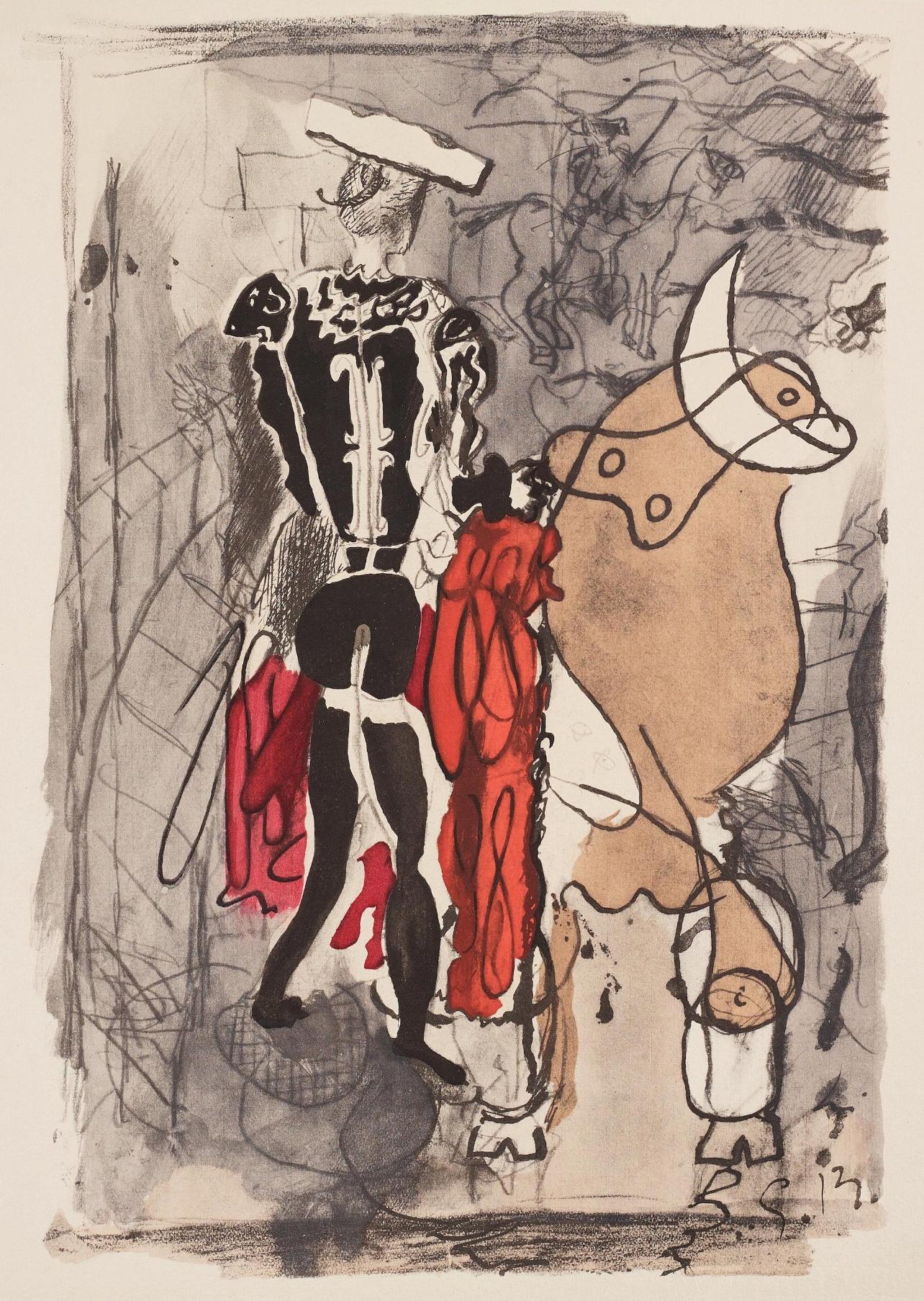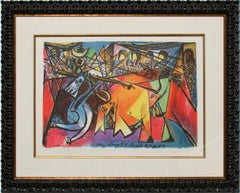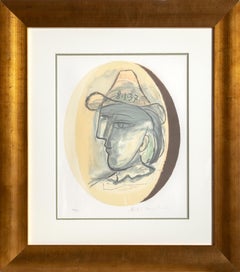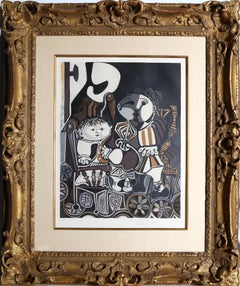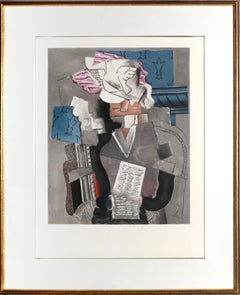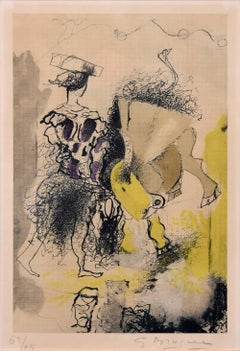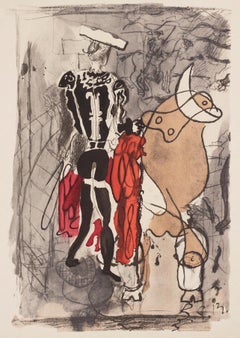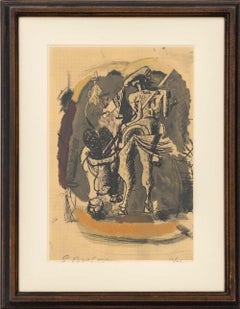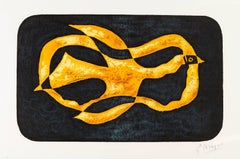Items Similar to Torero, Cubist Lithograph after Georges Braque
Want more images or videos?
Request additional images or videos from the seller
1 of 6
Torero, Cubist Lithograph after Georges Braque1950 (later printing)
1950 (later printing)
$850
£663.92
€752.63
CA$1,218.57
A$1,336.71
CHF 699.38
MX$15,909.45
NOK 8,833.66
SEK 8,286.13
DKK 5,621.06
About the Item
Georges Braque, After, French (1882 - 1963) - Torero, Year: 1950 (later printing), Medium: Lithograph, signed in the plate, Image Size: 20 x 13.5 inches, Frame Size: 30 x 23.5 inches
- Creation Year:1950 (later printing)
- Dimensions:Height: 30 in (76.2 cm)Width: 23.5 in (59.69 cm)
- Medium:
- Movement & Style:
- After:Georges Braque (1882 - 1963, French)
- Period:
- Condition:
- Gallery Location:Long Island City, NY
- Reference Number:Seller: RO697751stDibs: LU46616679312
About the Seller
4.9
Platinum Seller
Premium sellers with a 4.7+ rating and 24-hour response times
Established in 1979
1stDibs seller since 2014
3,171 sales on 1stDibs
Typical response time: 1 hour
- ShippingRetrieving quote...Shipping from: Long Island City, NY
- Return Policy
More From This Seller
View AllCourse de Taureaux, Cubist Lithograph after Pablo Picasso
By Pablo Picasso
Located in Long Island City, NY
Comprised of shapes with lines and sharp angles, this composition depicting the running of the bulls is hectic and energized. Rendered in gradiated rainbow colors, the animals in thi...
Category
1980s Cubist Animal Prints
Materials
Lithograph
Tete, Framed Cubist Lithograph after Pablo Picasso
By Pablo Picasso
Located in Long Island City, NY
A lithograph from the Marina Picasso Estate Collection after the Pablo Picasso painting "Tete". The original painting was completed in 1937. In the 1970's after Picasso's death, Mar...
Category
1980s Cubist Portrait Prints
Materials
Lithograph
Claude et Paloma, Cubist Lithograph after Pablo Picasso
By Pablo Picasso
Located in Long Island City, NY
A lithograph from the Marina Picasso Estate Collection after the Pablo Picasso painting “Claude et Paloma”. The original painting was completed in 1950. In the 1970’s after Picasso’s...
Category
1980s Figurative Prints
Materials
Lithograph
Personnage et Colombe, Cubist Lithograph after Pablo Picasso
By Pablo Picasso
Located in Long Island City, NY
A lithograph from the Marina Picasso Estate Collection after the Pablo Picasso painting "Personnage et Colombe". The original painting was completed in 1913. In the 1970's after Pic...
Category
1980s Cubist Still-life Prints
Materials
Lithograph
Baj Chez Picasso 7, Cubist Etching by Enrico Baj
By Enrico Baj
Located in Long Island City, NY
Artist: Enrico Baj, Italian (1924 - 2003)
Title: Baj Chez Picasso 7
Year: 1969
Medium: Aquatint Etching, Signed and numbered in pencil
Edition: 58/100
Image Size: 19.5 x 15.5 inches
...
Category
1960s Cubist Portrait Prints
Materials
Etching
Femme Endormie, Cubist Lithograph after Pablo Picasso
By Pablo Picasso
Located in Long Island City, NY
This Pablo Picasso print portrays a nude woman who has fallen asleep. The figure reclines backward toward the viewer, resting on her back. The artist's use of flowing line and the br...
Category
1980s Cubist Portrait Prints
Materials
Lithograph
You May Also Like
Torero
By Georges Braque
Located in Palo Alto, CA
Toreros seek to elicit inspiration and art from their work. Their intentions are not to deliberately cause harm the bull, but create an emotional connection with the crowd through th...
Category
1950s Modern Figurative Prints
Materials
Lithograph
$6,000 Sale Price
33% Off
Braque, Composition, Braque Espaces, 13 Dessins, Lavis, Aquarelles (after)
By Georges Braque
Located in Southampton, NY
Lithograph and stencil on vélin papier a la cuve du moulin richard de bas specialement filigrané pour cette édition paper. Inscription: signed in the plate and unnumbered, as issued....
Category
1950s Modern Landscape Prints
Materials
Stencil, Lithograph
$3,996 Sale Price
20% Off
Free Shipping
"Picador"
By Georges Braque
Located in Astoria, NY
Georges Braque (French, 1882-1963), "Picador", Lithograph in Colors, 1955, signed lower left and numbered edition "27/75" lower right, wood frame. Image: 13" H x 9" W; frame: 19.5" H...
Category
1950s Post-Modern Figurative Prints
Materials
Lithograph
After Georges Braque - Antiborée - Lithograph
Located in Collonge Bellerive, Geneve, CH
Lithograph after Georges Braque.
Signed in the plate
Edition of 150
Dimensions: 76 x 117 cm
Bibliography:
« Les Métamorphoses de Braque» of Heger de Loewenfeld and Raphaël de Cuttoli , Editions FAC, Paris, 1989.
In 1961 Georges Braque decided with his laidary friend Heger de Loewenfeld to pick up certain of his works to in order to create artworks, this beautiful litograph is one of them.
Héméra in the Mythology:
In Greek mythology Hemera was the personification of day and one of the Greek primordial deities. She is the goddess of the daytime and, according to Hesiod, the daughter of Erebus and Nyx (the goddess of night). Hemera is remarked upon in Cicero's De Natura Deorum, where it is logically determined that Dies (Hemera) must be a god, if Uranus is a god. The poet Bacchylides states that Nyx and Chronos are the parents, but Hyginus in his preface to the Fabulae mentions Chaos as the mother/father and Nyx as her sister.
She was the female counterpart of her brother and consort, Aether (Light), but neither of them figured actively in myth or cult. Hyginus lists their children as Uranus, Gaia, and Thalassa (the primordial sea goddess), while Hesiod only lists Thalassa as their child.
The father of Cubism
Three Cubist that distinguishes art historian periods were initiated and developed by Georges Braque: The Cubist Cézanne (1907-1909), Executive (1909-1912) and synthetic (1912-1922).
Post-Impressionist and fawn, Braque no longer adheres to the contingency of a decorative way or the other. Cézanne’s paintings exhibited at the Grand Palais during the retrospective of 1907 are a revelation: Cézanne sought and invented a pictorial language. In his footsteps, Braque went to the South with the reasons of the Master. He returned with Estaque landscapes and surprising Ciotat it keeps Cezanne geometric model and retains the “passages” continuity from one surface to another to create the sensation of “turning around” of the object represented. But he wants to go after the consequences of the vision of Cezanne. In his paintings Houses in L’Estaque (1908) it simplifies the volumes of houses, neglects detail by removing doors and windows: the plastic rhythm that builds the table. Large Nude , a masterpiece of the period, can be considered the first work of Cézanne cubism .
Systematizing and deepening Braque discoveries open the door analytical cubism. In 1909, his painting became more cerebral than sensual. The pattern is recreated in the two-dimensionality of the canvas, leaving aside any illusionistic perspective. In Still Life with Violin, objects are analyzed facets according to their characteristic elements, each facet referring to a particular view of the object. There are so many facets of points selected view: Table reflects the knowledge of the object and the ubiquity of the eye. Moreover, Braque is looking for the essence of the objects in the world rather than their contingency, which explains the absence of light source and use of muted colors (gray, ocher), contingent aspects of the object . But formal logic has stepped facets, erased any anecdote to the object and ultimately led to his painting a hermetic more marked on the edge of abstraction (see the series of Castle Roche-Guyon ).
Braque, anxious to keep the concrete and refusing at all costs that the logic of Cubism takes the paintings to abstract, reintroduced signs of reality in his paintings in 1912 marks the beginning of Synthetic Cubism. Historians speak of “signs of real” rather than reality because what interests Braque, this is not to put reality into a table, but to create a painting which, by its language, refers to the real. To do this, he invented two major techniques XX th century inclusions and contributions. The inclusions consist of painting objects that have no real depth, materials (wallpaper in Nature morte aux playing cards faux wood is a pictorial inclusion) or letters (calligraphic inclusion in Portuguese ), made first brush and a few months later stencil. Contributions are defined in contrast with the collage on canvas of foreign materials: glued or sand paper, sawdust, etc.. Regarding the collages, Braque used for the first time in September 1912 a piece of adhesive paper imitating faux wood Compote...
Category
1950s Cubist Animal Prints
Materials
Lithograph
Bullfighter - Lithograph Print by Mino Maccari - 1950s
By Mino Maccari
Located in Roma, IT
Bullfighter is an Original Hand-watercolored lithograph on cream-colored paper realized by Mino Maccari in the 1950s.
Good conditions.
Mino Maccari (1898-1989) was an Italian write...
Category
1960s Modern More Prints
Materials
Lithograph
$282 Sale Price
20% Off
Pablo Picasso, Lithograph numbered Toros Y Toreros
By Pablo Picasso
Located in Pasadena, CA
Pablo Picasso Toros Y Toreros Luis Miguel Dominges Lithograph 129 :500 numbered
Wonderful Pablo Picasso lithograph of ''Toros Y Toreros...
Category
1960s Cubist Prints and Multiples
Materials
Lithograph
More Ways To Browse
James Jacques Joseph Tissot On Sale
James L Thomas
Japanese Linocut
Japanese Woodcuts 18th Century
Jayme Odgers
Jean Cocteau Lovers
Jean Yves Commere
Jehudo Epstein
Jim Dine Hammers
Jim Dine Rimbaud
Jim Dine Venus
Joe Eula The Supremes
John L Doyle
Josef Muller Brockmann
Joseph Stall
Julian Opie Walking
Kamala Harris
Käthe Kollwitz On Sale
